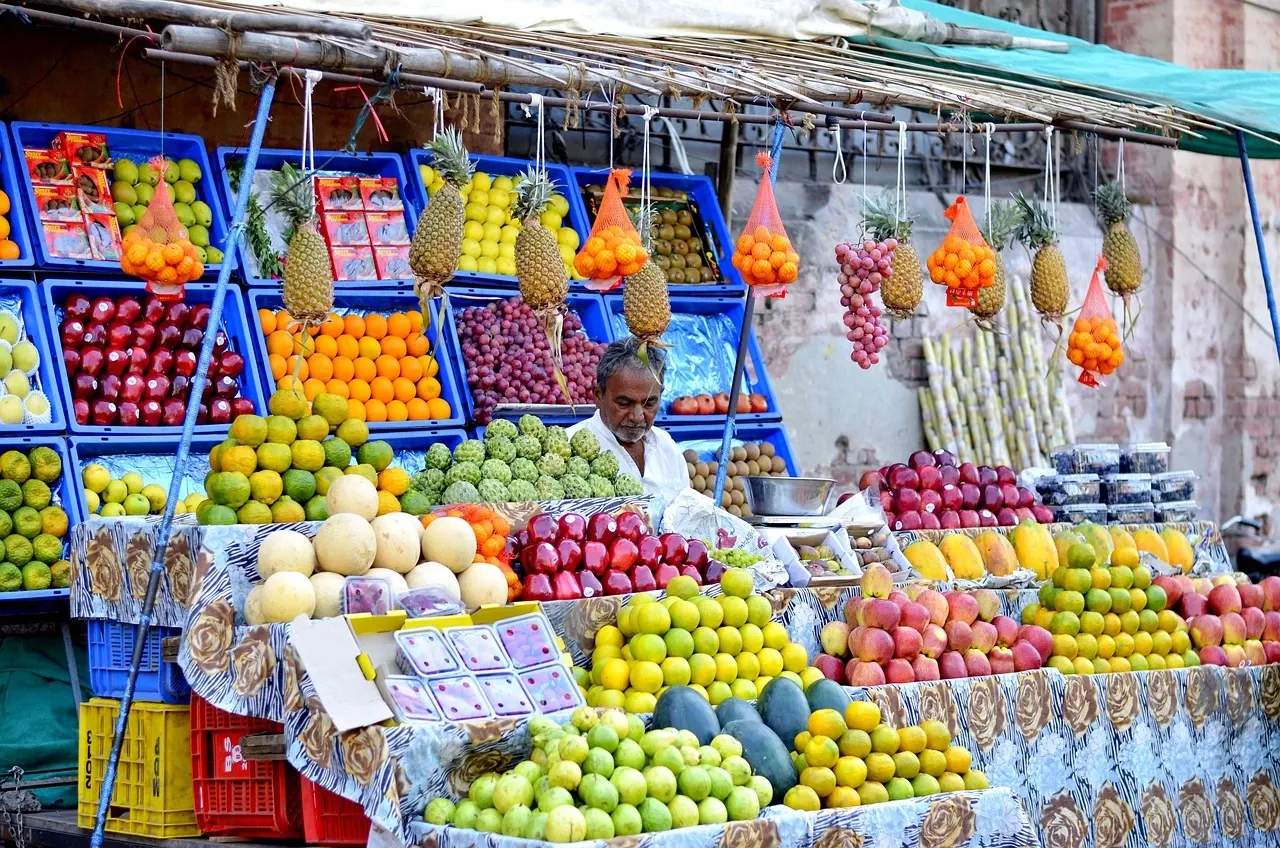Upstox Originals
Plough to plate: Why monsoon is crucial for Indian economy

7 min read | Updated on June 23, 2024, 19:12 IST
SUMMARY
A normal or mildly surplus rainfall is usually linked to increased earnings for farmers, more livelihood for farm labourers, controlled food inflation, and high rural consumption.

Around 55% of the total land under cultivation in India is directly dependent on rainfall for agriculture (Representative image/Pixabay)
Southwest monsoon winds, which account for the bulk of the annual rainfall received in India, is crucial for the country's farm-dependent $4 trillion economy.
The season powers the country's agriculture sector, which held a share of 15% in the total gross domestic product (GDP) in FY24, and provided employment to 45% of the overall workforce, as per the Ministry of Statistics and Programme Implementation.
The amount of rainfall received during these four months acts as a key determinant for the output of food and cash crops.
A normal or mildly surplus rainfall is usually linked to increased earnings for farmers, more livelihood for farm labourers, controlled food inflation, and high rural consumption, experts point out.
"In short, monsoon has a plough to plate effect, as its impact is felt right from sowing of crops to the purchase of kitchen staples in the retail market," said Sushmita Kumari, a professor of economics at a Lucknow-based college.
Here's a deep dive into how monsoon affects the Indian economy:
Lifeline of agriculture
Rainfed or rain-dependent agriculture accounts for 55% of the net sown area (139.42 million hectares), and 61% of India’s farmer population, according to the Ministry of Agriculture.
This meant that only 45% of the total cultivable land received water through channels of irrigation, and the remainder depended directly on rainfall.
Rainfed agriculture is "crucial to the country’s economy and food security as it accounts for 40% of the total food grain production", as per a report released by the Department of Agriculture and Farmers' Welfare, Government of India, in 2022.
This portion of net cultivable area provided 85% of the total nutri-cereals, 83% of pulses, 70% of oilseeds, and 65% of cotton, according to the report.
"Crop diversity in rainfed regions is striking with almost 34 major crops grown annually compared to four to five major ones in irrigated areas," it said.
Further, the livelihoods of 80% of small and marginal farmers is impacted by rainfed agriculture, as per the findings.
Impact of sluggish monsoon
In cases of deficit rainfall, as recorded in 2023, an adverse impact on agriculture is evident. A 6% deficit rainfall in last monsoon led to the country's agriculture growth rate declining to 1.4% in fiscal year 2023-24, which was the lowest in the past eight years, as per the data shared by the Ministry of Statistics and Programme Implementation last month.
The output was adversely affected as farmers were forced to cut down the area for kharif crop cultivation due to sluggish monsoon. The arable land used for cultivation of pulses such as moong, arhar, and urad, had dropped by 5.41 lakh hectare as against 2022, and oilseeds dropped by 3.16 lakh hectare.
However, a major crop that remained unaffected was rice as its cultivation is dependent on channeled irrigation. The area under rice cultivation had soared by 7.69 lakh hectare.

The chart shows how land under cultivation for the above-listed crops changed in 2023 vis-a-vis 2022, primarily due to deficit rainfall (Amount in lakh hectares)
*Source: Ministry of Agriculture
A deficit monsoon not only affects food crop outcome, but also hits the cultivation of cash crops like sugarcane, cotton, and natural rubber. These serve as raw materials for several industries.
As pointed out in the chart above, the land under cotton cultivation declined by 3.86 lakh hectares in 2023, as compared to 2022, in the backdrop of deficit rainfall.
Rural employment, consumption
A normal or above-normal rainfall is linked to strong agricultural activity, which in turn leads to higher rural consumption.
Among sectors that benefit include automobile (high sale of tractors), chemicals (demand for fertilisers) and fast-moving consumer goods (FMCG) as spending capacity of rural population increases.
This year, the above-normal rainfall projection of the IMD is seen as one of the factors driving the surge in tractor sales in May.
A total of 4,675 units were sold in May 2024, up 120% as compared to 2,128 units in May 2023, according to the Federation of Automobile Dealers' Association (FADA).

Monsoon marked an early onset in peninsular India this year, reaching two days ahead of the normal arrival date of June 1. However, since then, its progress has remained sluggish (Representative image/Pixabay)
"Good monsoon means more area of cultivation, which allows farm labourers to earn up to ₹700-₹800 per day," Pote said. This is higher than the average wage earned by a male farm labourer, which stood at ₹345.7 in FY23, as per the data released earlier by the Reserve Bank of India (RBI).
The link between strong monsoon and higher rural employment is also reflected in the lower demand for jobs under the Mahatma Gandhi National Rural Employment Guarantee Act (MNREGA) during the monsoon months.
For example, the demand for MNREGA jobs dropped by 35% in July 2022. However, in cases of deficit rainfall, a reverse trend is witnessed.
In 2023, the year of deficit rainfall, the demand for MNREGA jobs rose by 28% in July and 31% in August, according to the data maintained by the website of the rural employment scheme.
Combating inflation
A robust monsoon season is essential to bolster the RBI's efforts to curb inflation. One of the direct impact is seen on food prices, which are moderated in cases of normal or above-normal rainfall.
A deficit rainfall would adversely impact kharif crop cultivation, which in turn would lead to inflationary pressures on food prices. Last year, the 6% below average rainfall was seen as one of the key contributors behind food inflation.
In the retail market, food inflation had soared to 11.5% in July last year, dragging the overall consumer price index (CPI) inflation rate to a 15-month high of 7.44%.

Within the food basket, the vegetable inflation grew by 27.3% in May 2024 (Representative image/Pixabay)
“Food inflation is the main factor behind the grudgingly slow pace of disinflation. Recurring and overlapping supply-side shocks continue to play an outsized role in food inflation," RBI Governor Shaktikanta Das stated, as per the minutes of the recent Monetary Policy Committee (MPC) meeting released on June 21.
Das, while briefing the press on June 7, said the above-normal monsoon, as projected by the IMD, bodes well for the kharif season and "could bring respite to food inflation pressures".
Analysts say that high food inflation may not only prevent the RBI from slashing interest rates in the near future, but would also add to the Centre's import bill. "Food items are price-sensitive, and if the inflationary pressures persist, then the Centre may have to increase the import of food items," a Mumbai-based economics researcher said.
A higher import bill holds the potential to derail the Centre's target to reduce fiscal deficit to 5.1% of the GDP in FY25, the researcher added.
By signing up you agree to Upstox’s Terms & Conditions
About The Author
Next Story
